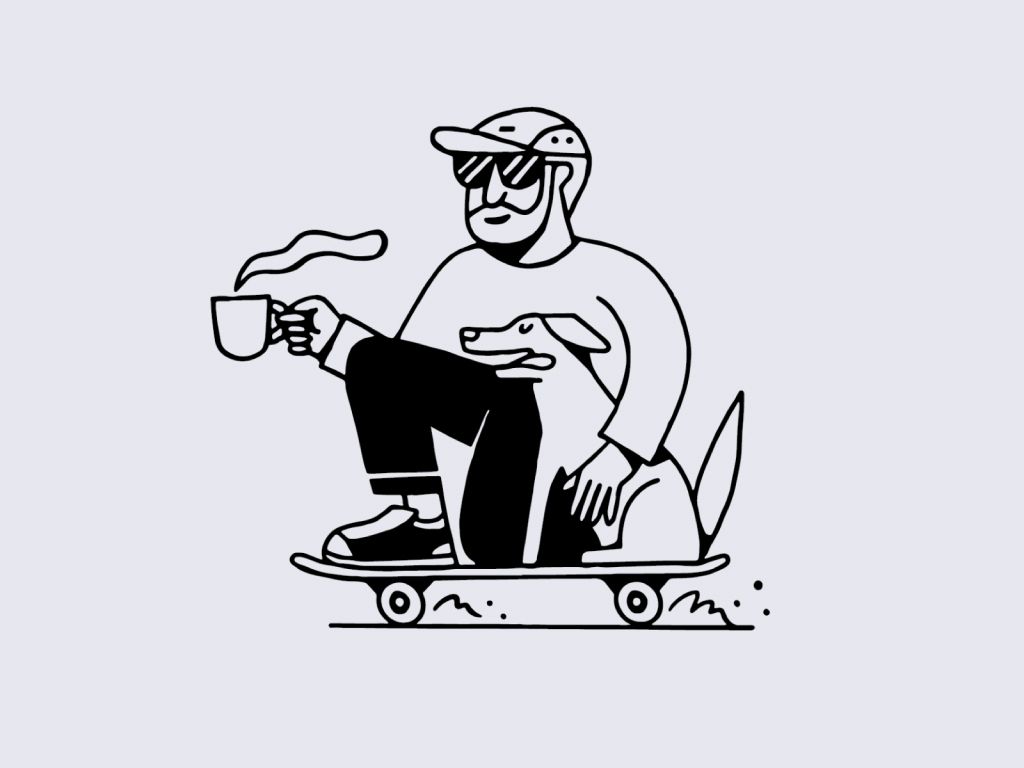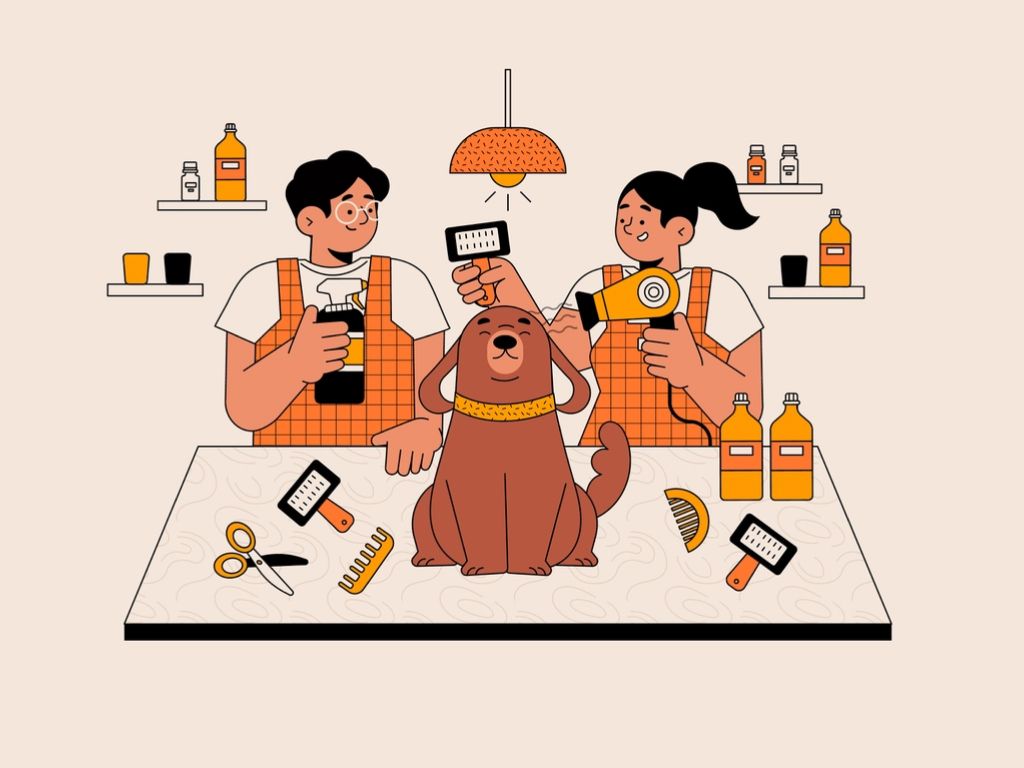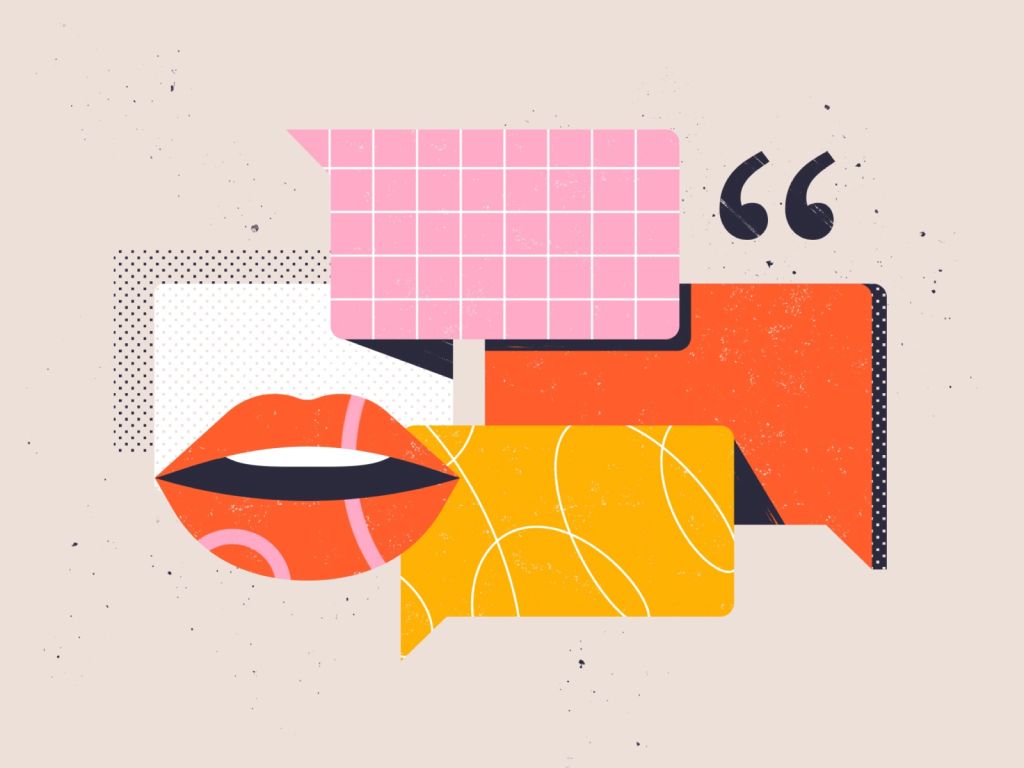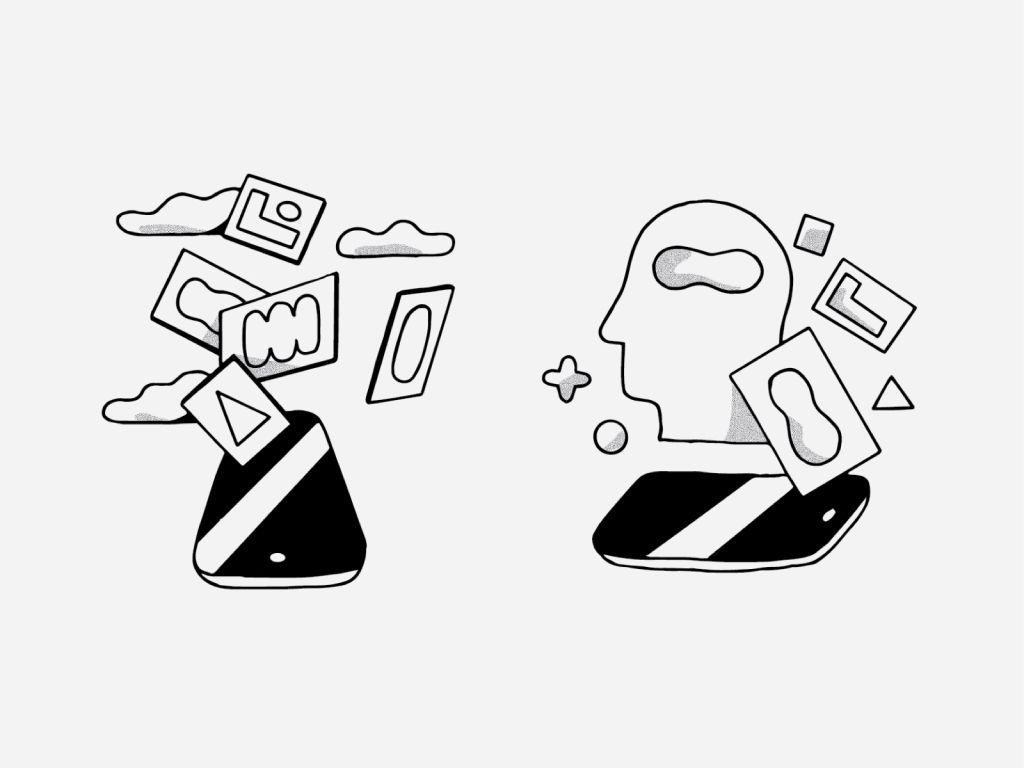How Ui/Ux Designers Work with Teams

A Ui/Ux designer is a professional who has experience in developing user interfaces and user interactions with a product. However, their role in an IT team is not just about creating a visually appealing product.
I. Design beyond design
A Ui/Ux designer is a professional who has experience in developing user interfaces and user interactions with a product. However, their role in an IT team is not just about creating a visually appealing product.
As Donald Norman, author of “The Design of Everyday Things” noted, “Design is not just what it looks like and feels like. Design is how it works.” Therefore, the role of a Ui/Ux designer is to create a product that is efficient, functional, and user-friendly.
They collaborate with other IT professionals such as developers, marketers, business analysts, etc. to ensure an optimal balance between user satisfaction and company business goals. For example, if a business wants to increase sales, a Ui/Ux designer can develop an interface that attracts users and makes the purchasing process more convenient. If the task is to create a new product, the designer can help identify new opportunities for the product’s development by addressing user needs.
For instance, Airbnb uses Ui/Ux design successfully to create a product that meets user needs and ensures high conversion rates. Their interface has become a model of good practice, particularly due to effective communication with users about available accommodations and a convenient booking process.
Therefore, including a Ui/Ux designer in an IT team helps to successfully develop a product and increase its profitability by ensuring high-quality and an optimal balance between user satisfaction and company business goals.
As Jesse James Garrett said in “The Elements of User Experience,”
“The designer is a passenger who knows where to go and what to do. The developer is a driver who knows how to get there. Only together can they reach their destination efficiently and quickly.”
II. Design thinking — why are designers so quirky?
Design thinking is a concept that allows for a sequential process based on “incentives”. Essentially, this process is based on working with the most vulnerable (unclear) areas of the project. We focus on how people think, feel, and interact with the product. The main goal of design thinking is to create a product that is useful, convenient, and attractive to users, as well as to ensure effective interaction between people and technology. It may sound somewhat generalized, but if we speak very crudely, we can imagine an electrician who, based on indicators, makes a decision to replace a socket — this will be electrical thinking, understand? :)
For example, Apple uses design thinking in the development of their products, such as the iPhone and iPad. To create these products, Apple carefully studies the needs and desires of its users and makes many iterations of prototypes to understand what users are missing and provide it to them. The company also pays close attention to aesthetics to provide the best visual experience for its users. The tech giant understands that internal (UX) cannot live without external (UI) in the current visual noise environment that surrounds us.
Design thinking involves several principles that can be used in product development:
- User-centeredness: develop products with consideration of user needs and desires, putting them first.
- Cross-functional teams: work in a team that consists of people from different professional fields to obtain different perspectives and ideas.
- Iterative process: create many prototypes and test them with users to discover the best solutions.
- Experimentation: don’t be afraid to take risks and try new ideas and approaches.
- Systematic approach: consider the product as a system and think about how its elements interact with each other.
Another example of using design thinking is IDEO, a company that specializes in designing products and services for clients. IDEO uses design thinking in all its projects by breaking down problems into iterations. For example, the company knows that users want more interactivity, more influence on the product. The company explores this need and understands that this desire arose because of the too long content loading process, accordingly solving this desire at the stage of its occurrence.
Therefore, design thinking is an important approach to product development that allows creating products that maximally meet user needs and desires. This approach focuses on the interaction between people and technology, which allows achieving the optimal balance between user satisfaction and company business goals. It is necessary to understand that many cases are considered “conceptually” here, as in the previous examples — we, designers, try to consider any situation as a concept, a sequence, and try to work precisely with the “beginning” of this sequence, not with the consequence.

III. Designer’s impact — examples
In this section, we examine the use of design principles in different contexts described in books. These examples demonstrate how design skills can be used not only in the context of design, but also in various fields and for different purposes.
- The first example is the use of design thinking to solve a problem. The idea is to explore the problem from different angles and consider it from the user’s point of view. In the book “Design Thinking: How to Solve Problems and Achieve Success in Any Situation” by Tim Brown, he describes an example where Procter & Gamble decided to increase sales of their Crest toothpaste. Instead of focusing on the technical aspects of the toothpaste, the team decided to focus on the users and understand what they are looking for in a toothpaste. As a result of this research, they were able to develop a new product that became one of the best-selling products on the market.
- The second example of successful design work can be the QuickBooks program for managing finances for small businesses, created by the Intuit company. In the book “The Design of Everyday Things” by Don Norman, he describes how the implementation of design thinking in the development process of QuickBooks led to great success. He argues that design thinking helped the company develop an intuitive and simple interface that makes it easy for customers who do not have a financial education to use the program. This allowed QuickBooks to become a leader in the market for financial accounting software.
Again, we see a trend where the designer considers business needs as a collaboration of user desires and business goals. Our main task is to establish mechanisms of success, profitability of the business, and user engagement. The formula for success is to have a 3-party relationship: designer, team, and owner.
IV. What is common or how designers can help
Ensuring successful communication between designers and other team members can be important for creating effective design. This is achieved through the proper use of design artifacts, which often intersect with other specializations.
Use cases
One example of such artifacts is use cases, which exist in both UX design and business analysis. Use cases are scenarios of product use, or specific “cases,” that help designers understand the needs of users in certain circumstances and create a product that meets their needs.
User personas
Another example is user personas, which are used in UX design and marketing. User personas help create a realistic profile of the target user, which contributes to understanding their needs and requirements for the product.
Wireframes
Another design artifact example is a wireframe, which also has similarities to a requirements specification in business analysis. It helps developers and designers understand the structure and placement of elements on a page or screen.
Style guide
There is also a style guide, which is an essential tool in branding and website and app development. It includes rules and standards for using colors, fonts, graphics, structure, element placement, and much more. This helps ensure a consistent branding style for the company or product.
Prototypes
And there are also prototypes. They allow designers and developers to test the functionality and ergonomics of a product at an early stage of development. Prototypes can be static (such as screen mockups) or interactive, where interaction with the user can be tested.
In all of these examples, design artifacts intersect with other specializations such as business analysis, software development, and marketing. They help ensure consistency and efficiency within the team and ensure the quality and success of the product in the market.
Of course, these are not all examples — this is just a small part of how design can intersect with other specializations. Very often you can talk about the same thing, just using different names, so one of the main points is to coordinate terminology.

V. The role of a designer and communication
Development of a product involves creating a new product or improving an existing one. This process can be complex and time-consuming, and the role of a designer in this process is crucial as a significant part of it depends on this specialist. In this section, we will discuss how designers influence product development, what tasks they perform, and what principles they follow.
The main task of a designer in product development is to ensure that the design of the product meets the business goals of the company, the needs of the users, and the technical limitations. To achieve these goals, the designer must be aware of all the stages of product development and be involved in coordinating them with different members of the team.
The principles that designers follow in product development include:
- Researching and analyzing user needs;
- Developing and coordinating the design concept of the product;
- Creating a prototype and testing it with users;
- Preparing design materials for product development and production;
- Coordinating work with other members of the product development team.
Of course, it depends on the specific situation, but in general, if you do not have personal experience in design, it is better to focus on your needs and goals. If you have a clear vision of what you want to achieve with design, you can set a goal and describe it to the designer. It is also important to be open to their advice and recommendations, as they have deeper knowledge and experience in this area.
One approach to communicating with a designer is to use a design brief. This is a document that contains answers to key questions about the project, such as the project’s goal, target audience, budget, and desired colors and style. A design brief can help the designer better understand your needs and vision.
It is also important to use precise terms and terminology when communicating to avoid misunderstandings.
For example, if you talk about a “beautiful design,” it can be interpreted differently, so it is better to use specific terms such as “minimalist design,” “material design,” and so on.
Another approach to communicating with a designer is to use design mind maps. These are diagrams that visualize the design process and stages of the project. They can help you better understand the design process and organize your thoughts.
It is important to remember that a designer is also a person with their own strengths and weaknesses, and should be worked with like any other team member. To maintain productive and healthy communication with a designer, it is important to follow certain principles.
- First of all, it is important to remember the importance of mutual understanding and clarity in communication. It is important to explain your thoughts and desires as clearly and understandably as possible to avoid misunderstandings.
- The second principle is to listen to the designer and accept their views and advice. The designer has deep knowledge in the field of design (surprise, surprise :) ) and the ability to develop the optimal solution for the product. If there are different points of view, it is better to analyze them and choose the most suitable solution for the product and its audience.
- In addition, it is important to respect the designer as a professional and an expert in their field. It is better to avoid criticism and expressions that can hurt the designer as a person and undermine their trust in the team.
- It is important to approach the designer with respect and trust and work with them on equal terms, adhering to the principles of mutual understanding, respect, and clarity in communication.
An example of proper communication with a designer can be the book “Don’t Make Me Think” by Steve Krug. In his book, Krug talks about how to understand and work with designers. He points out that communication with a designer should be mutually beneficial and respectful, with each partner being treated with respect.
Krug recommends following these principles when communicating with a designer:
- Don’t tell the designer “whatever you want” or “I trust you.” Give the designer clear instructions regarding your business and the product’s goals.
- Be open to the designer’s ideas. They may have useful ideas that can improve the product.
- Always adhere to deadlines. If the designer understands that meeting the schedule is important to you, they will be able to organize accordingly.
- Be open to change. The designer may suggest changes that will make the product better.
The above example is very important because proper communication with a designer is a key factor in creating a quality product. Through convenient and effective communication with a designer, you can ensure the quality and success of your product and the team as a whole.

VI. Conclusion
In short, design thinking and design artifacts are important not only for designers, but also for other specializations in the IT industry.
Integrating a Ui/Ux designer into a team helps ensure the success of the product and an optimal balance between business goals and user satisfaction.
For effective communication with a designer, it is important to understand their role in the project, be sensitive to their views, and adhere to specific communication principles. It is also important to remember that designers are also human beings and to treat them with respect and openness.
Here are some tips for working with designers:
- Understand the designer’s role in the project and follow their recommendations.
- Establish clear communication and ensure timely and understandable exchange of information.
- Be open to dialogue and feedback.
- Treat the designer with respect and openness, remembering that they are also a person with their own views and beliefs.
I have tried to describe this experience in “simple words” and I hope that I was able to bring some clarity that will improve your work in the team.
Thank you for reading my articles!
As always, I would appreciate constructive criticism, and don't forget about my Twitter :)